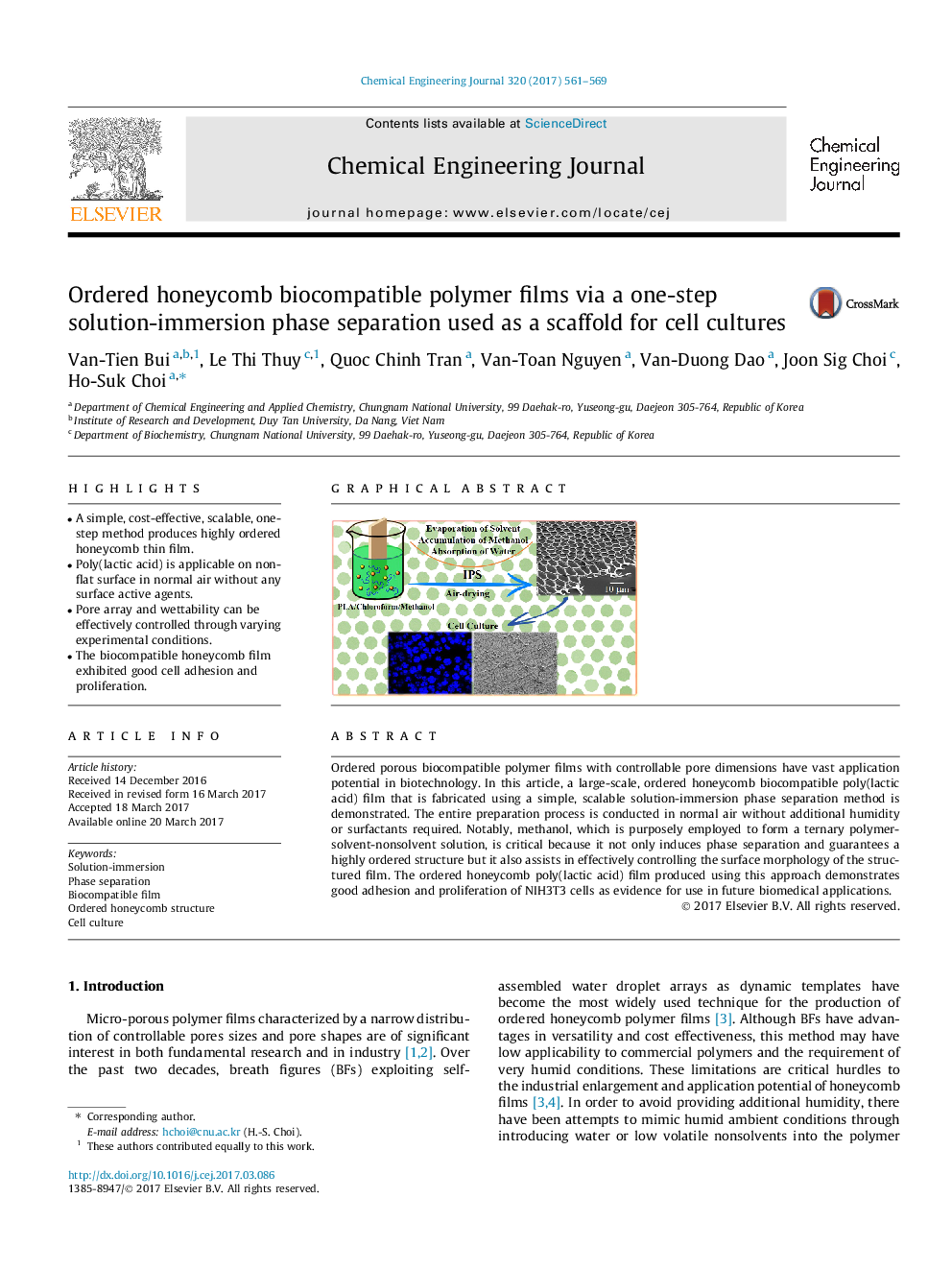| کد مقاله | کد نشریه | سال انتشار | مقاله انگلیسی | نسخه تمام متن |
|---|---|---|---|---|
| 6466051 | 1422958 | 2017 | 9 صفحه PDF | دانلود رایگان |
- A simple, cost-effective, scalable, one-step method produces highly ordered honeycomb thin film.
- Poly(lactic acid) is applicable on non-flat surface in normal air without any surface active agents.
- Pore array and wettability can be effectively controlled through varying experimental conditions.
- The biocompatible honeycomb film exhibited good cell adhesion and proliferation.
Ordered porous biocompatible polymer films with controllable pore dimensions have vast application potential in biotechnology. In this article, a large-scale, ordered honeycomb biocompatible poly(lactic acid) film that is fabricated using a simple, scalable solution-immersion phase separation method is demonstrated. The entire preparation process is conducted in normal air without additional humidity or surfactants required. Notably, methanol, which is purposely employed to form a ternary polymer-solvent-nonsolvent solution, is critical because it not only induces phase separation and guarantees a highly ordered structure but it also assists in effectively controlling the surface morphology of the structured film. The ordered honeycomb poly(lactic acid) film produced using this approach demonstrates good adhesion and proliferation of NIH3T3 cells as evidence for use in future biomedical applications.
163
Journal: Chemical Engineering Journal - Volume 320, 15 July 2017, Pages 561-569
